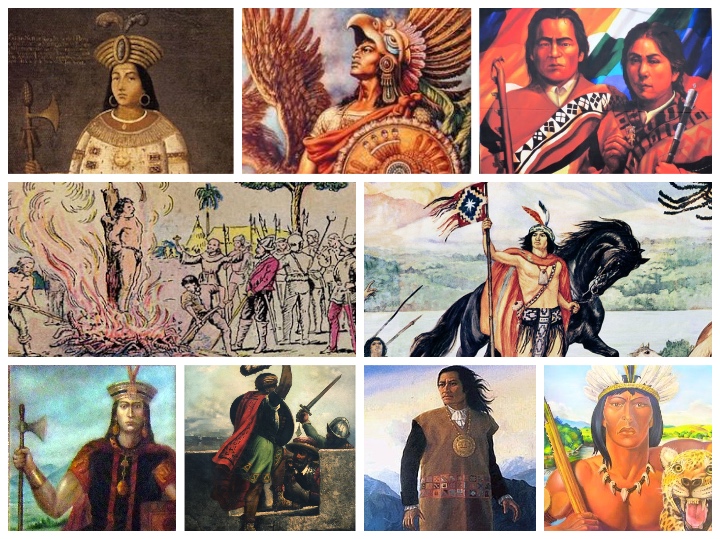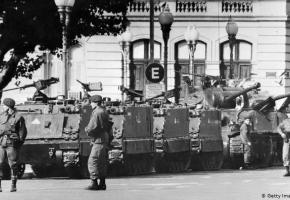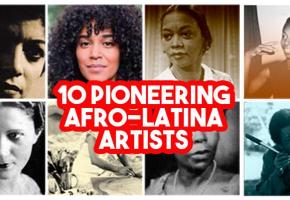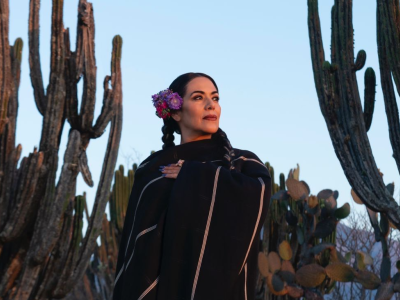1. Anacaona (Dominican Republic/Haiti 1474?–1504),
Anacaona was a Taíno cacica ( female cacique/chief), theologian and poet born in Xaragua. Before the arrival of Christopher Columbus in 1492, Ayiti or Quisqueya to the Taínos was divided into five kingdoms, i.e., Xaragua, Maguana, Higüey, Maguá, and Marién. The Spaniards named it La Española, i.e. Hispaniola — now known as the Dominican Republic and Haiti. Anacaona was born into a family of caciques. She was the sister of Bohechío, the ruler of Xaragua. She succeeded Bohechío as cacica after his death. Under Anacaona's rule, the Spanish settlers and the Taínos of Xaragua coexisted and intermarried. In 1503, Nicolás Ovando, the governor of the island, visited Xaragua. He suspected an insurrection was brewing among the Taíno chiefs, including Anacaona, presently in the kingdom. Ovando gave the order for the caciques to be captured and burned. Anacaona was hanged, making her a martyer and inspiration for rebellions to come. Songs have been written about her, most famously Anacaona, sung by Cheo Feliciano.
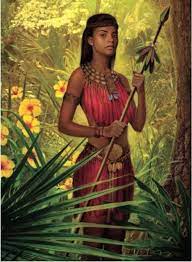
2. Agüeybaná II (Puerto Rico c. 1470 – 1511)
Agüeybaná II 'El Bravo' was one of the two principal and most powerful caciques of the Taíno people in "Borikén" when the Spaniards first arrived in Puerto Rico on November 19, 1493. Having learned what the Spaniards had done in neighbouring Hispaniola and the fate of Anacaona and the Tainos there, Agüeybaná II led the Taínos of Puerto Rico in the Battle of Yagüecas, also known as the "Taíno rebellion of 1511" against Juan Ponce de León and the Spanish Conquistadors.
As in neighbouring Hispaniola, Agüeybaná II's father received Spanish conquistador Juan Ponce de León in 1508, with hospitality and friendly treatment. Upon the senior Agüeybaná's death in 1510, Agüeybaná II held Areytos (war dances or secret meetings) with others caciques where he organized a revolt against the Spaniards. Agüeybana II killed Cristobal de Sotomayor and his men, and gravely Juan González who escaped to Caparra where he reported the killings to Ponce de León. After this, Ponce de León led the Spaniards in a series of offensives against the Tainos that culminated in the Battle of Yagüecas in 1511 where Agüeybaná II was killed.
After the death of Agüeybaná II, the native warriors continued in a guerilla warfare rebellion lasted for next 8 years, until 1519, but with Spanish reinforcements and the smallpox epidemic, by 1520 the Taíno presence in the Island had almost disappeared. Agüeybaná II is admired in Puerto Rico for his loyalty to his people. Puerto Rico has named many public buildings and streets after him.
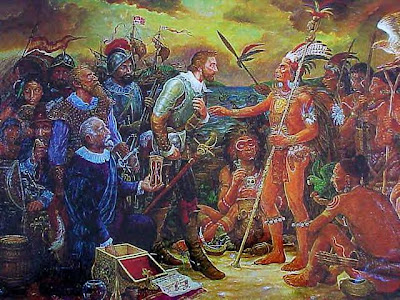
3. Hatuey (Dominican Republic, Cuba - died February 2, 1512)
Hatuery was a Taíno cacique (chief) originally from the island of Hispaniola (now Dominican Republic), who fled to Cuba during the Spanish conquest and led a revolt thus becoming one of the first fighters against colonialism in the New World.
In 1511, Diego Velásquez sailed from Hispaniola (now the Dominican Republic) to conquer and colonize Cuba. Among his soldiers in that expedition was Hernán Cortés, who later conquered Mexico. When he arrived in Cuba, Velásquez founded the island’s first Spanish settlement at Baracoa.
Whet they didn’t know was that Hatuey had escaped Hispaniola in canoes with about four-hundred men, women and children, to warn the Cubans against the white men who had inflicted so much suffering on his people.
Hatuey told the Cubans "they tell us, these tyrants, that they adore a God of peace and equality, and yet they usurp our land and make us their slaves. They speak to us of an immortal soul and of their eternal rewards and punishments, and yet they rob our belongings, seduce our women, rape our daughters.”
The Taínos of Cuba could not believe the horrendous message brought by Hatuey, and few joined him. Despite this, with the men he had, Hatuey attacked the fort of Baracoa, then dispersed to the hills to regroup for the next attack. He did this for about three months, which kept the Spaniards on the defensive.
Through an informer, Velásquez finally captured Hatuey. He was burnt alive on February 2, 1512. Just before lighting the fire, a priest offered him spiritual comfort, showing him the cross and asking him to accept Jesus. Hatuey answered that he wanted nothing to do with a God that would allow such cruelty to be unleashed in his name. Aside from being one of the first guerilla-style warriors in Cuba’s history, Hatuey is the first martyr in the struggle for Cuban independence.
4. Cuauhtémoc (Mexico, dies 1525)
Cuauhtémoc was the Aztec ruler (tlatoani) of Tenochtitlan from 1520 to 1521, making him the last Aztec Emperor Cuauhtémoc has been described as a “winner in defeat,” since though executed by the Spanish he is now a revered figure in Mexico,
Cuauhtémoc took power in 1520 C.E. as successor of Cuitláhuac and was a nephew of the emperor Moctezuma II. He ascended to the throne when he was 18 years of age, as his city was being besieged by the Spanish under Hernán Cortés and was devastated by an epidemic of smallpox.
Unlike Moctezuma II, he did not think that Cortés was the god Quetzalcoatl and was determined to defeat the Spanish. At first, he succeeded in pushing the Spanish back in a series of land and naval assaults before additional troops swelled the Spanish numbers.
On August 13, 1521, Cuauhtémoc went to call for reinforcements from the countryside to aid the falling Tenochtitlán after 80 days of urban warfare against the Spanish. Of all the Nahuas, only Tlatelolcas remained loyal, and the surviving Tenochcas looked for refuge in Tlatelolco where even women took part in the battle.
Cuauhtémoc was captured while crossing Lake Texcoco in disguise on his mission to obtain assistance. Convinced that Cuauhtémoc knew the whereabouts of hidden treasure, Hernan Cortés had Cuauhtémoc tortured by having his feet put to fire, but refused to reveal the location; indeed most of the tales about the "Aztec’s gold" is a myth. In 1525, Cortés took Cuauhtémoc on his expedition to Honduras, perhaps because he feared Cuauhtémoc would lead an insurrection in his absence. During this expedition, Cortés ordered Cuauhtémoc hanged on February 28, 1525.
5. Manco Inca and Kura Oclloc (Peru, died 1539 and 1544)
Cura Ocllo was an Inca queen, the wife and sister of Manco Inca Yupanqui. Manco initially worked as a puppet ruler, after the Spanish invasion, having challenged Atahualpa and the northern tribes from Quito in the Inca Civil War. He later turned against his Spanish lords and made rebellion, was captured in a failed escape attempt but later released. Once free, Manco endeavored to free his land from the Spaniards. Attempting to regain the Inca capital of Cuzco in a ten-month siege in 1536, he failed, and despite a victory over conquistador Francisco Pizarro's brother Hernando at Ollantaytambo in January 1537, he had to withdraw.
Cura Ocllo likely followed her husband through these events and had a son, Sayri Tupac, with him in 1535, during Manco's time in captivity. Gonzalo Pizarro demanded that Manco give them his queen, but when Manco refused Gonzalo and a gang of his thugs captured and raped Kura and kept her.
The rape by Gonzalo of Kura Ocllo set off a 40-year rebellion. Kura escaped back to Manco and they both retreated to the mountain-jungle of Vilcabamba, beyond Machu Picchu. From here they waged a partly-successful war against the Spaniards.
In one incident it was Kura Ocllo herself, now 20, spotted a detachment of Spaniards creeping up a steep path to capture Manco. She organized the womenfolk to impersonate Inca troops to frighten the Spaniards while Manco himself led the charge on the Spaniards, killing all 30 of them, a tremendous if temporary victory.
Gonzalo himself then led a military expedition into the Vilcabamba. Taking two of Kura Ocllo’s brothers who Gonzalo sent negotiate. Manco had them immediately beheaded as traitors –in front of Kura Ocllo. As Gonzalo and his men closed in Manco escaped, but alone. The horrified Kura Ocllo paralysed with shock refused to desert the bodies of her brothers.
Gonzalo threw Kura to his men. On the way back to Ollantaytambo, she tried to protect herself by covering herself in her own excrement. In the plaza of Ollantaytambo, Francisco and Gonzalo Pizarro ordered her stripped naked, tied to a stake and whipped while Cañari mercenaries stoned her and shot darts into her.
She refused to cry out, until just before dying, she shouted out, “Cowards!” Manco was assassinated in Vilcabamba a few years later in 1544 by the same renegade Spaniards who earlier had killed Francisco Pizarro. He became the last symbol and leader of major Inca resistance towards the Spanish conquerors.
6. Cahuide (Peru,1536)
Cahuide was one of the heroes of the Battle of Sacsahuaman, the last battle with the Spaniards for the control of Cusco. In 1535, when Conquistadors had already captured the city of Cusco, Manco Inca, decided to up rise up against the Spaniards by raising an army with which he laid siege to the city for many months.
Cahuide fought with exemplary courage in the streets against the Spanish. After many bloody battles the Incas retreated to Sacsaywaman sanctuary, a strategic location from which Manco Inca's troops directed their attacks on the city for more than 20 days. In 1536, to end the siege, the Spanish decided to storm the walls of the fortress of Sacsahuaman, after a relentless campaign of arrows and stones into the compound which, along with the lack of water, weakened Cahuide’s men.
Armed with a war club, which could smash a skull with a single blow, Cahuide held at bay several dozens of Spanish soldiers while defending, single handedly, the fortress of Sacsahuaman. When defeat was imminent, he jumped from the top of one of the three towers of Sacsahuaman called Muyuq Marka (round place) to avoid falling into the hands of Spanish enemies. According to Pedro Pizarro, Hernando Pizarro was really pissed off thatg he wasn’t able to capture him alive.
7. Guaicaipuro (Venezuela 1530 – 1568)
Guaicaipuro led a powerful coalition of tribes into battle against the Spanish. Guaicaipuro's tribe, was located in the area of the land of the Teques, near Caracas, where a large amount of gold was discovered and as the Spaniards started to exploit the mines, Guaicaipuro attacked, forcing the Spanish to leave.
Despite several counter attacks the Spanish failed to secure the area, because of Guiacaipuro’s constant assaults including one on the Governor of the Teques Rodríguez Suárez who he ambushed and killed. And thus, Guaicaipuro became the main and central figure in the uprising of all the native tribes in the vicinity of the valley, and managed to unite all the tribes under his command. In 1562 they defeated an expeditionary force led by Luis Narváez. Due to the fierce attacks, the Spanish retreated away from the area for several years.
In 1567 Diego de Losada, (the founder of Caracas) ordered the mayor of the city, Francisco Infante to undertake Guacaipuro's capture. Unable to defeat him in battle, In 1568 Infante and his men were led by native guides to the hut where Guaicaipuro lived and they set it on fire, burning the Cacique alive.
Venezuelan bolívar banknote depicting Guaicaipuro, 2016. Dia de la Raza (previously America's Discovery Day), was recently renamed as Día de la Resistencia Indígena (Day of Indigenous Resistance).
8. Túpac Amaru (1545 – 24 September 1572)
Túpac Amaru was the last monarch of the Neo-Inca State, the remnants of the Inca Empire in Vilcabamba, Peru.
Following the Spanish conquest of Peru in the 1530s, in 1571 Túpac Amaru inherited the title of monarch of the small independent Neo-Inca State in Vilcabamba, established by Manco Inca Yupanqui
He declared war on 14 April 1572, despite being only lightly armed, in a spirited attempt to lift the siege held by the Spanish. On 24 June the Spanish entered Vilcabamba to find it deserted. Túpac Amaru had left the previous day with a party of about 100 and headed west into the lowland forests. The group, which included his generals and family members, had then split up into smaller parties in an attempt to avoid capture.
Spanish soldiers pursued them, returning with Túpac Amaru's two brothers, other relatives and several of his generals. The Sapa Inca and his commander remained at large. A group of forty hand-picked soldiers under Martín García Óñez de Loyola set out to pursue them. They followed the Masahuay river for 170 miles, where they found an Inca warehouse and captured a group of Chunco Indians and tortured them to tell them if they had seen the Sapa Inca. They reported that he had gone down river, by boat, to a place called Momorí. The Spaniards then constructed five rafts and pursued them.
At Momorí, they discovered that Tupac Amaru had escaped by land. Slowed by his wife, who was about to give birth, fter a fifty-mile march, Túpac Amaru and his wife were captured warming themselves around campfire around nine o'clock at night. The captives were brought back to the ruins of Vilcabamba and together they were all marched into Cuzco on 21 September.
Túpac Amaru was beheaded in front of the Cathedral of Santo Domingo in the central square of Cuzco infront of 10,000 to 15,000 witnesses were present. Túpac Amaru mounted the scaffold accompanied by the Bishop of Cuzco. As he did, it was reported that a "multitude of Indians, who completely filled the square, saw that lamentable spectacle [and knew] that their lord and Inca was to die, they deafened the skies, making them reverberate with their cries and wailing."
9. Lautaro (Chile 1534 – 1557)
Lautaro led the Mapuche resistance leader against Spanish conquest in Chile, after being kidnapped as a child by the Spanish, and spending teenage years as a personal servant of chief conquistador Pedro de Valdivia. He escaped in 1551 and once back among his people he was declared toqui and decided to train and lead Mapuche warriors into battle.
As a teenage, Lautaro witnessed the atrocities committed by the Spanish on captive Mapuche warriors. His own boss, Pedro de Valdivia ordered his men to cut off the feet and hands of every Mapuche in Curiñancu's tribe, for resisting Spanish colonization, among them Curiñancu and his wife, Lautaro’s parents. After his capture they made Lautaro a Yanakuna, meaning a “black slave” in Quechua. He remained a prisoner of the Spanish for three years. Because he kept his personal hatred of Valdivia hidden, Lautaro soon became his personal page.
During this period he had a certain level of friendship with one of Valdivia’s principal captains by the name of Marcos Veas, who taught Lautaro how to use different kinds of weapons and cavalry tactics, knowledge he later used to defeat the mounted conquistadors. Lautaro introduced use of horses to the Mapuche[and designed better combat tactics. He organized a large, cohesive army—a military formation unfamiliar to the Mapuche and led a series of victories against the Spanish, culminating in the Battle of Tucapel in December 1553, where Pedro de Valdivia was killed.
The outbreak of a typhus plague, a drought and a famine decimated the Mapuche population in 1554 and 1555. Despite this, Lautaro defeated the Spanish at the Battle of Marihueñu. He also besieged Concepción with 4,000 warriors. Only 38 Spaniards managed to escape by sea the second destruction of the city.
Between 1556 and 1557, Lautaro attempted to reach Santiago with a small group of men to liberate the whole of Central Chile. But he was ambushed and killed by the Spanish. His head was cut off and displayed in the plaza of Santiago.
Lautaro was Chile’s first general, He inflicted crushing defeats on Spanish armies which had armored horsemen wielding swords, metal war clubs and steel-tipped lances, armored footmen as well, with their own swords and clubs, crossbows and arquebuses, even though his own Mapuche were armed only with slings, bows and arrows, wooden spears, clubs and axes. Remarkably, he did this not fighting a "guerilla" war, but in pitched battle.
Lautaro became an inspiration to resistence leaders all over Latin America. His name was used by Francisco de Miranda when he founded the Lautaro Lodge, a secret Latin American independence society of the end of 18th century and the beginning of the 19th century.
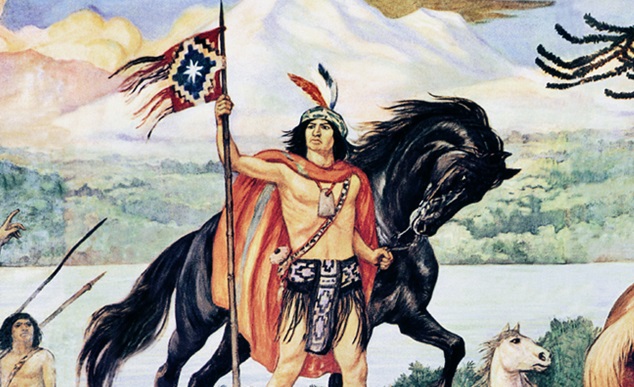
10. Bartolina Sisa and Tupac Katari (Bolivia c. 1750 - 1782)
Bartolina Sisa Vargas led numerous revolts against the Spanish rule in Charcas, Alongside her husband, the indigenous leader Túpac Katari, she participated in the organisation of indigenous military camps that took part in the siege of La Paz.[2]She was betrayed and turned in to the Spanish authorities, who later executed her.
Her date of birth is uncertain, some sources give it as August 24, 1753, while others give it as August 12, 1750. in Sica Sica met Julián Apaza, later to be known as Túpac Katari, whom Sisa would marry and have four children. [4]According to the Franciscan friar Matías Balderrama, Sisa was thin, of medium height, comely appearance and great intelligence.[5]
Together with her husband and sister-in-law Gregoria Apaza, she led an indigenous uprising against the Spanish in Bolivia at the head of an army of some 40,000 which laid siege to the city of La Paz in 1781.
Katari and Sisa set up court in El Alto and their army maintained the siege for 184 days, from March to June and from August to October. Sisa was a commander of the siege, and played the crucial role following Katari's capture in April. The siege was broken by colonial troops who advanced from Lima and Buenos Aires.
Túpac Katari was executed by the Spanish forces in 1781, Bartolina Sisa was captured and executed on September 5, 1782. She was hanged after being publicly humiliated in the Colonial Square (now Plaza Murillo), beaten and raped. Once dead, the Spanish cut her body into pieces, showed her head in public to intimidate the natives, and sent her limbs to be exhibited in different villages.
Túpac Katari became a Bolivian hero, inspiring guerrilla groups of the 19702 such as the Túpac Katari Guerrilla Army, the first Bolivian satellite in orbit was named Túpac Katari 1. In her honour, the 5th of September was instituted as the International Day of the Indigenous Women since 1983. The couple recently featured on the Bolivian bank notes with his influential sister Gregoria Apaza.
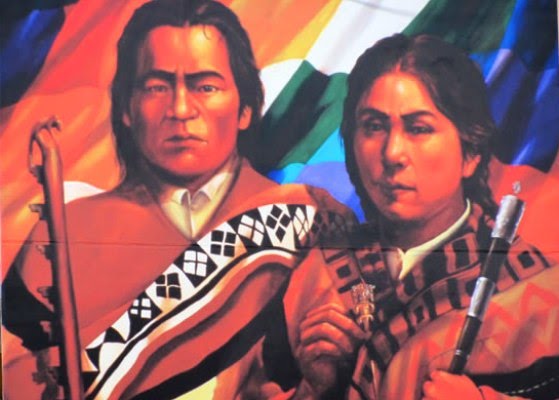
11. Tupac Amaru II and Micaela Bastidas (Peru 1738 – 1781)
Túpac Amaru II was the leader of the largest uprising in colonial Spanish-American history which raged across the Andes from 1780-1783.
born Jose Gabriel Condorcanqui, as a young man, Condorcanqui inherited his father’s role as cacique (leader of the local indigenous peoples). He repeatedly appealed to the Spanish governors to reduce the heavy taxes and improve working conditions (including forced labour) for the local people.
When his appeals were ignored, Condorcanqui eventually arrested the Corregidor (a local Spanish official) Antonio de Arriaga and had him hanged in front of a large crowd. Condorcanqui renamed himself Túpac Amaru II, after his ancestor who was the last indigenous ruler of the Incas, and launched an uprising in favour of freedom for indigenous and enslaved peoples.
The rebellion, initially led by Túpac Amaru along with his wife Micaela Bastidas, raged between 1780 – 1783. Túpac successfully captured the town of Sangarara in November 1780, but there was no support amongst the ruling classes and the initial victory was followed by a string of defeats and retreats.
Bastidas commanded her own battalion of insurgents and for a time Túpac managed to create an alliance between Quechua speakers and rebels from Bolivia. The alliance collapsed, however, and in 1781, Túpac and Bastidas were betrayed to the Spanish authorities in Cuzco. They were arrested, along with their family and sentenced to death.
Túpac was forced to witness the execution of a number of his family including his wife and one of their sons. His tongue was cut out and his arms and legs tied to four horses which all pulled in opposite directions. When this failed to separate his limbs from his body, he was beheaded. Despite this gruesome display, the rebellion continued for another two years, led by Túpac’s relatives, including another son.
Although ultimately unsuccessful, the uprising helped to inspire a wave of rebellions against colonial rule. Túpac and Bastidas became heroes of Andean peoples and indigenous rights, and Peru eventually gained its independence in 1811.


